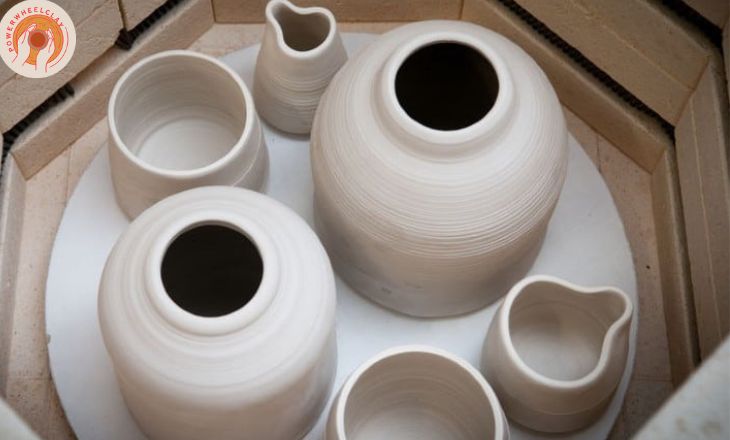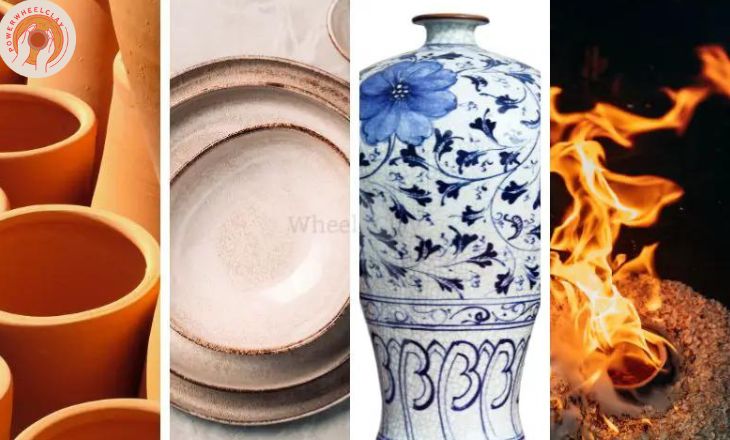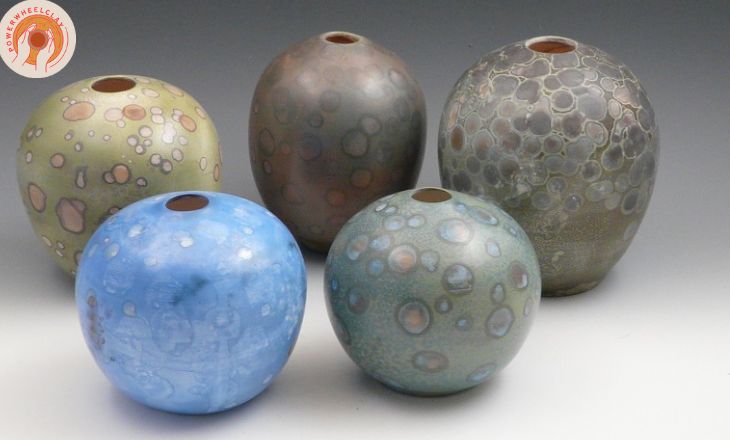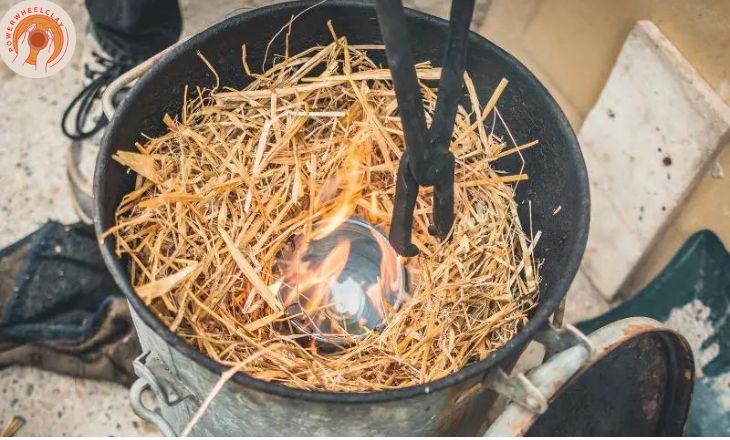Imagine creating beautiful pottery without the need for a traditional kiln. In a world where artistic expression knows no bounds, the age-old craft of pottery-making has taken an innovative turn.
Enter the fascinating realm of making pottery without a kiln, where ingenuity and creativity collide to produce stunning clay creations.
Firing clay to perfection has long been associated with kilns, and a fresh crop of artists and enthusiasts is investigating alternative methods to produce amazing outcomes without this vital equipment.
The Art Of Making Pottery Without A Kiln
Pottery, an ancient art form dating back thousands of years, has always been synonymous with the use of a traditional kiln to fire and harden clay creations.
Imagine crafting intricate vessels, sculpting detailed figurines, and molding unique pieces all without the constraints of a fiery furnace.
The fascinating world of making pottery without kilns will be examined in this article, along with methods that embrace modernity and challenge tradition in this traditional craft.

But what if you don’t have a kiln?
Pottery, with its rich history and timeless charm, has always captivated artists and enthusiasts alike. The process of shaping clay into beautiful vessels and sculptures is a truly rewarding experience that allows for endless creativity.
What happens when the traditional method of firing pottery in a kiln is not within reach? Is it still possible to indulge in pottery without this essential tool?
The answer is a resounding yes! Exploring the world of no-kiln pottery opens up a whole new realm of possibilities and challenges that can ignite your passion for ceramics like never before.
The Dance Of Clay Types And Firing Techniques

In the intricate world of pottery, where the types of clay and firing techniques take center stage, the absence of a kiln can often feel like a barrier between creativity and realization.
Imagine harnessing the elements themselves to transform raw earth into enduring works of art, all without the need for specialized equipment or elaborate setups.
Join me as we delve into the fascinating realm of alternative firing methods and unearth the secrets of how to fire clay without a kiln – a process filled with innovation, experimentation, and perhaps even a touch of magic.
Earthenware:
With its humble origins and lower firing temperature, Earthenware finds solace in the earthy embrace of pit firing. Earthenware stands at the crossroads where tradition meets innovation in a mesmerizing dance of clay types and firing techniques.
Stoneware
The process begins with selecting the right type of clay that can withstand high temperatures without losing its shape or integrity. Then comes the meticulous shaping and sculpting by hand or wheel, followed by careful drying before facing the intense heat of kilns.
Stoneware’s allure lies not just in its aesthetic appeal but also in its practicality, making it a beloved choice for both artists and everyday users seeking beauty fused with durability.
Porcelain
Porcelain, the delicate and exquisite art form that has captivated artisans and collectors for centuries, is a testament to the dance of clay types and firing techniques.
From the ancient kilns of China to the elegant workshops of Europe, porcelain has emerged as a symbol of luxury and refinement, blending tradition with modernity in an intricate ballet of artistry.
Raku Clay:
The unique firing process of raku involves removing pieces from the kiln at peak temperature and subjecting them to rapid cooling—yielding stunning results marked by crackled surfaces and vibrant hues.
It’s essential to match the firing method to the type of clay when thinking about an alternative method. For instance, stoneware could be more suitable for firing techniques that can reach higher temperatures, such as a barrel or raku firing, while earthenware is a better fit for pit firing because of its lower firing temperature.
Alternative Firing Techniques:
Earthenware clay has been a fundamental material in the world of pottery for centuries, cherished for its versatility and malleability. the art of firing earthenware clay has evolved beyond traditional techniques, leading to a fascinating exploration of alternative firing methods.
From primitive pit firing to high-tech Raku processes, artists and potters are continuously pushing the boundaries of what is possible with this humble material.
Glazing Pottery:
firing techniques play a crucial role in transforming raw clay into beautiful works of art. From pit firing to raku firing, these unconventional approaches not only produce stunning glazing effects but also challenge the boundaries of what is possible in the world of ceramics.
Imagine being able to fire clay without a kiln, using natural elements like fire and smoke to create one-of-a-kind patterns and textures on your pottery pieces.
Firing Temperatures:
With the evolution of ceramic art and pottery, firing techniques have played a crucial role in shaping the outcome of these creations.
One of the key aspects that artists and potters focus on is the firing temperature, ranging from 1745 F to 2012 F (950 C to 1100 C), which greatly influences the characteristics and durability of the finished pieces.
Kitchen Oven:
Alternative firing techniques offer a unique way to unleash creativity in pottery making. While kitchen ovens typically peak at around 500 degrees Fahrenheit (260 degrees Celsius), artists and craftsmen can experiment with various methods to achieve distinct results.
Pit firing
Pit firing, an ancient technique rooted in history, offers a unique approach to pottery creation. The process involves placing ceramics in a pit filled with combustible materials like sawdust, leaves, and other organic substances.
Fire burns and temperatures rise, and the elements interact with the pottery surface, creating stunning and often unpredictable patterns.
Types of Pottery and Clay
- Stoneware, known for its durability and versatility, is a popular choice among artists for its ability to withstand high temperatures during firing.
- Porcelain is revered for its delicate appearance and translucency when thin-walled. It requires precise handling due to its fine texture and sensitivity to heat.
- Earthenware, with its rich history dating back centuries, offers a warm and rustic feel perfect for everyday use. Its porous nature allows for vibrant glazes that create unique finishes.
Safety Precautions:
- Proper ventilation is essential during alternative firings such as Raku or Pit Firing to prevent the inhalation of harmful fumes from the burning materials.
- Protective gear like gloves and goggles become even more crucial in these situations where direct contact with flames and hot surfaces is common.
- Fire safety should always be a top priority when experimenting with alternative firing techniques. Having a reliable fire extinguisher nearby and understanding how to use it can make all the difference in case of an unexpected flare-up.
- proper handling techniques for moving hot pots from kilns or open flames are critical to avoid burns or accidents.

Diverse Firing Methods
Raku firing
- Raku Firing is a dynamic and exciting process that involves several distinct steps to achieve stunning results. Artists meticulously prepare their clay pieces, ensuring they are dried and free from any moisture to prevent cracking during firing.
- Glazing uses a special raku glaze on your pottery. The firing stage is where the magic truly happens, as pieces are subjected to intense heat in a gas kiln for a short period before being removed red-hot.
- Reduction is a key element in raku firing, where the oxygen supply is restricted during cooling to create dramatic color variations and metallic luster on the surface of the pottery.
- Cooling process, pieces are placed in combustible materials like sawdust or leaves which ignite upon contact with the hot pottery, creating striking smoke patterns that enhance the overall aesthetic appeal of the finished piece.
Sawdust Firing:
- To prepare for sawdust firing, it’s essential to thoroughly dry out the greenware before the firing process begins. This helps prevent cracking and ensures even heat distribution during the firing.
- Placement, and carefully layering the sawdust around and on top of the ceramic pieces is crucial for achieving the desired results.
- In the firing process, maintaining a controlled environment is key. increasing the temperature allows for organic combustion of the sawdust, which in turn produces unique color variations and surface textures on the ceramics.
- Cooling before opening the kiln helps solidify these effects and enhances their overall appearance. Sawdust firing truly offers a creative way to add depth and character to ceramic pieces through its methodical approach and stunning results.
Barrel Firing:
- The preparation phase is crucial, as it involves carefully loading the pots into the barrel with adequate space between them to ensure uniform firing.
- Placement within the barrel is equally important, as different areas can experience varying levels of heat distribution.
- The firing process, monitoring temperature fluctuations is essential to avoid uneven heating and potential cracking.
Gas Stove Firing:
- When preparing for gas stove firing, it is crucial to ensure your pieces are bone dry to prevent cracking during the process.
- The firing process closely monitors the temperature with a pyrometer or cone packs to ensure accurate heating.
- Maintaining consistent heat levels is essential for achieving desired results in terms of color development and surface textures.
Charcoal Grill Firing
- In the preparation process Ensuring the coals are arranged in a single layer will help avoid hot spots and ensure consistent cooking results.
- Once the coals are placed, firing them up requires attention to detail. Lighter fluid can be used for convenience, but many prefer using chimney starters or electric starters for a cleaner burn with fewer chemicals involved.
- After grilling, allowing the coals to cool down properly is essential for safety and future use.
Campfire Firing:
- Preparation involves gathering suitable wood and creating a well-ventilated fire pit.
- Placement of the pottery within the flames requires strategic positioning to ensure even heating.
- As the fire intensifies, the pots absorb heat and transform, showcasing unpredictable patterns and colors.
- The cooling process is crucial for preventing cracks or breakage in the finished pieces.
Outdoor Wood-Fired Oven:
- Once the outdoor wood-fired oven is prepared and properly stacked with wood, the firing process begins. This step sets the foundation for successful cooking by ensuring that the oven reaches and maintains an optimal cooking temperature.
- Firing methods can vary from using kindling and small pieces of wood to starting with larger logs for a longer burning time.
- In the monitoring phase, it’s crucial to pay attention to both the flames and coals inside the oven. The ideal cooking temperature is typically reached when there are few flames left, and the embers are glowing hot.
- One of the most exciting aspects of pottery-making is experimenting with diverse firing methods, each offering a unique outcome influenced by various factors like clay type and thickness.
- Raku firing, an ancient Japanese technique, involves removing red-hot pieces from the kiln and placing them into combustible materials for rapid cooling.

Conclusion
By exploring different techniques such as pit firing or using a microwave kiln, artisans can continue to hone their craft and produce stunning pieces without the need for a conventional kiln.
Embrace the creativity and innovation of making pottery without a kiln, and let your imagination guide you toward new artistic heights.
FAQS
What Happens If You Don’t Kiln Clay?
If you don’t fire clay in a kiln, it won’t harden properly. Firing clay at high temperatures in a kiln is essential in pottery-making.
Can You Put Pottery In The Oven Instead Of A Kiln?
It’s not a good idea to put pottery in a regular oven instead of a kiln. Pottery needs high temperatures to harden and become strong. Using a regular oven can heat pottery unevenly, leading to cracks or breaks.
How To Fire Pottery Without A Kiln?
Firing pottery without a kiln can be tough, but you can do it using different ways like pit firing, sawdust firing, or a gas stove.
How Do You Glaze Pottery At Home?
Glazing pottery at home is a fun and rewarding process. make sure your pottery piece is dry and clean. Choose the type of glaze you want to use – dipping, brushing, or spraying.
